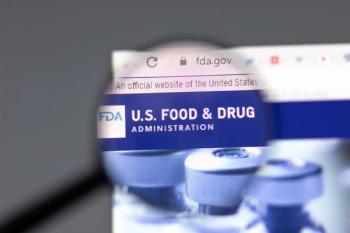
The cobas liat system is a closed system that aims to reduce contamination risks and enhances the reliability of results at the point of care.

The cobas liat system is a closed system that aims to reduce contamination risks and enhances the reliability of results at the point of care.

Antiviral treatments for respiratory viruses such as respiratory syncytial virus (RSV) are crucial, especially with the rise of the "triple-demic."

Although the research focused on Black communities in the United States, there is also evidence linking racism and blood pressure for patients who are Asian or Hispanic.

Axatilimab-csfr is a colony-stimulating factor-1 receptor (CSFR1) blocking monoclonal antibody indicated for cGVHD after 2 or more lines of prior therapy in adults and pediatric patients that weigh at least 40 kg.

Approximately 66% of patients received a COVID-19 vaccine in the fall of 2024 and only 26% received a respiratory syncytial virus vaccine.

Digital therapeutics (DTx), a novel evidence-based software approach, is revolutionizing health care by delivering personalized treatments. Pharmacovigilance ensures DTx safety but faces challenges such as data privacy and standardization.

Cannabis use during pregnancy may harm fetal development and long-term health.

Remission is a new emphasis and treatment goal for the management of asthma.

Patients with myelofibrosis have a higher likelihood of having a cardiovascular risk factor when compared with essential thrombocythemia or polycythemia vera.

Boosting ursodeoxycholic acid (UDCA) levels through dietary supplementation was shown to control tumor growth in mice with liver cancer.

Managing bispecific antibodies requires collaboration and meticulous protocols.

Administered every 4 weeks, the approval could serve as a breakthrough for easier and more effective care for patients with early Alzheimer disease.

Based on the updated label, new pharmacodynamic data have been added for a better understanding of the drug for individuals with attention-deficit/hyperactivity disorder (ADHD).

As medication experts, pharmacists can aid in treatment selection and support patients through the process.

Glucose monitoring can help providers and pharmacists optimize medication management for personalized diabetes care.

Inhaling smoke can have acute effect for people with asthma, chronic obstructive pulmonary disease (COPD), or pulmonary fibrosis.

Tucatinib is an oral HER2-targeting tyrosine kinase inhibitor that was approved by the FDA in 2020.

Presence of comorbidities in older patients with breast cancer complicates treatment decisions.

Rates of invasive breast cancer or death were 50% lower with adjuvant trastuzumab emtansine compared with trastuzumab alone.

Pharmacists can play an important role in tobacco cessation.

Biosimilar use is not linked to an increased risk of treatment failure among pediatric patients with inflammatory bowel disease (IBD).

Endocrine-immune-based therapies yielded favorable objective response rates but had limited impact on pathological complete response.

The US health care market faces transformative changes in 2025, as biosimilars, GLP-1s, and new pharmacy economics reshape how benefit managers balance innovation with affordability.

These data suggest the potential efficacy of immune checkpoint inhibitors with anthracycline-based chemotherapy.

Pharmacists bridge communication gaps and enhance shared decision-making.

Ruling potentially affects federal ability to regulate pharmacy.

Point-of-care testing implementation could provide valuable data on community respiratory syncytial virus incidence and enhance sentinel surveillance efforts.

Patients recovering from COVID-19 and caregivers reported how some social determinants of health were helpful in their recovery, while others led to difficult social and mental challenges.

The report highlights perspective from 4 key stakeholders of patients, specialty pharmacies and providers, biopharmaceutical industry, and public and private payers.

The FDA is modernizing its approach to drug development and optimization.